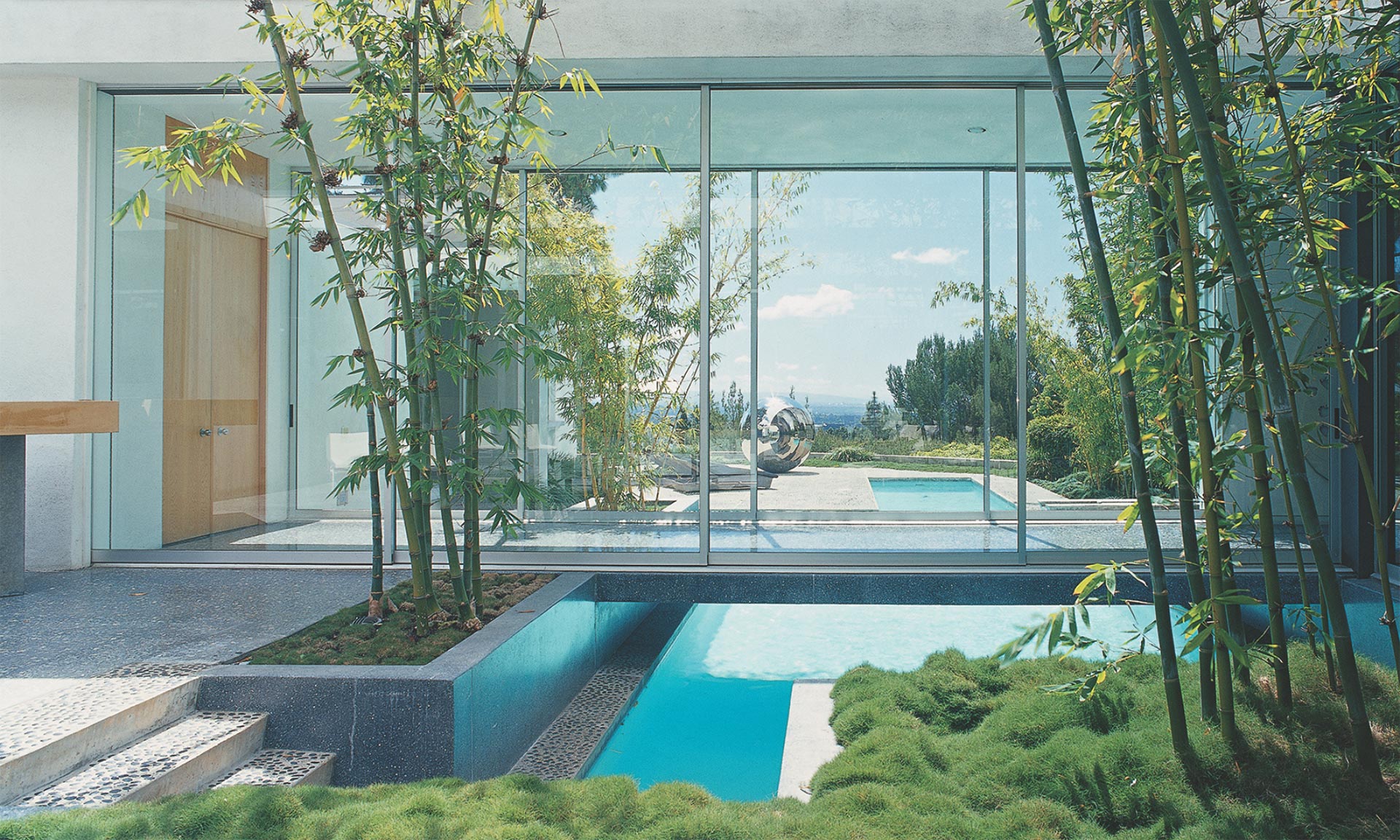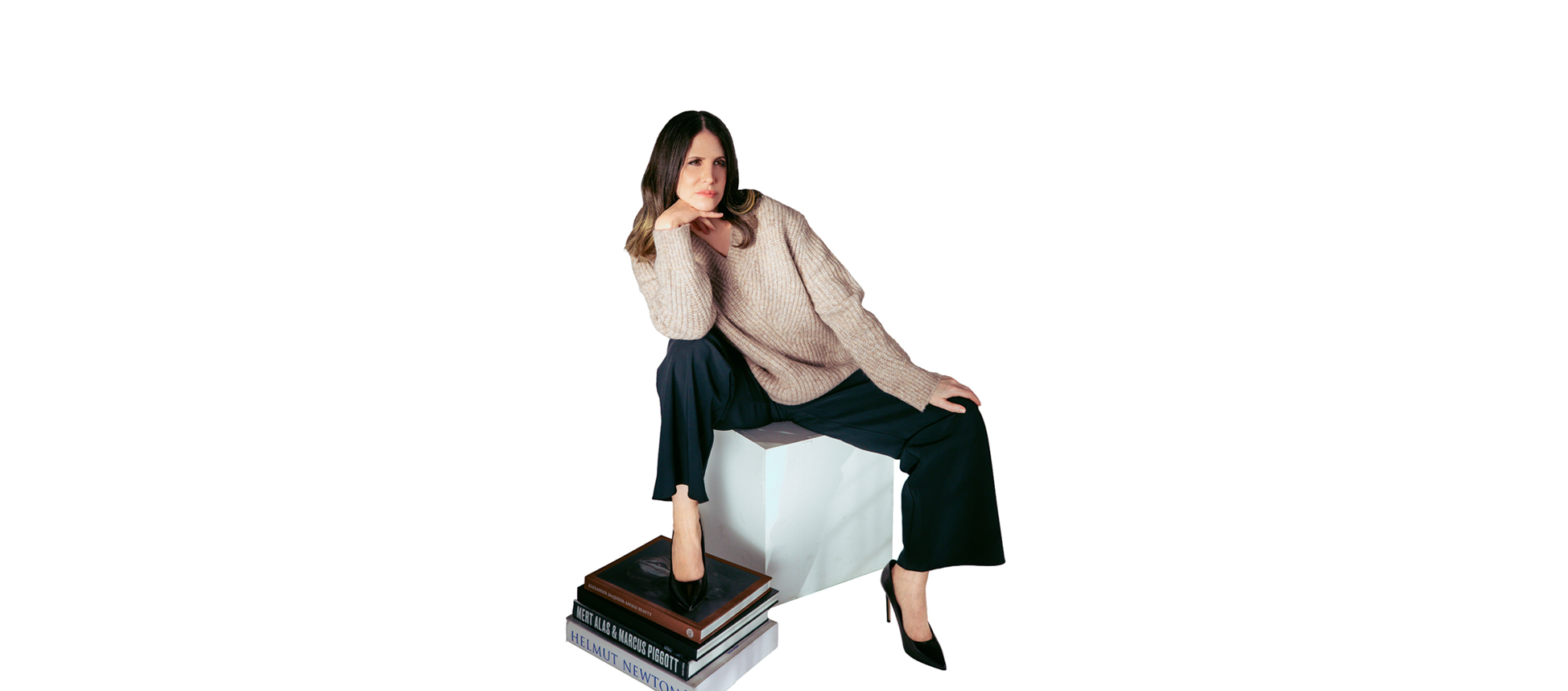
Beverly Hills
It began with water.
The desirability of Beverly Hills took shape long before “the 90210” became synonymous with prestige and wealth. The first inhabitants who called themselves Tongva and Gabrielino considered the land around the juncture of what is now Sunset Boulevard and Beverly Drive literally sacred, long before the entertainment industry made Beverly Hills hallowed ground.
The Spaniards who displaced the indigenous cultures retained their place-name in translation: El Rodeo de las Aguas, or the gathering-place of the waters. Appropriately, the Beverly Hills Hotel was constructed on the location in 1912. The water’s source was the three canyons, Franklin, Coldwater and Benedict, rising above what is now Southern California’s glowing epicenter of international commerce and global glamour. Moisture in the hillsides and canyon crevices condensed to form streams that led down into what is the heart of the City of Beverly Hills, which was incorporated in 1914.
In 1838, the Mexican governor of California deeded the land grant for El Rodeo de las Aguas to Maria Rita Valdez Villa, the Afro-Latina widow of a Spanish soldier. When she sold the property to Benjamin D. Wilson and Henry Hancock for the princely sum of $4,000, the legendary waters mysteriously retreated and shriveled to dust. The names of the unlucky owners do manage to live on, in nearby Mount Wilson and Hancock Park.
More drought followed, and in 1900 oilman and developer Burton Edmond Green along with partner railroad magnate Henry E. Huntington representing the Amalgamated Oil Company purchased the tract which had been dubbed “Morocco Junction” by still another pair of ill-starred buyers, Hammel and Decker. They drilled for oil and found water instead, and Green renamed the area Beverly Hills, after his fond boyhood memories of Beverly Farms in Massachusetts.
Burton Green opened the original Beverly Hills subdivision in 1907, when Sunset Boulevard was a dirt road flanked by bean fields. The centerpiece of Green’s visionary development was the Beverly Hills Hotel which opened in 1912, designed by architect Elmer Grey on 12 acres of the former Rancho Rodeo de las Aguas. Grey’s inspired plan included elements that made the hotel a virtual autonomous city unto itself: children’s playground, saddle livery, tennis courts, flower gardens and pools in addition to its own lighting and power plants, post office, library, drug store, barber shop and gift boutique.
The hotel drew guests including Sarah Bernhardt like a magnet, and those guests often became full-time residents. The cozy fireplace in the lobby hearth was kept comfortably ablaze year-round, forming a social center and proving the gathering-place for the first stars of the new industry known as motion pictures.
Because regulars including Darryl Zanuck and Will Rogers often stopped by for a refreshment after playing polo, the bar, originally known as El Jardin (the Garden) was later christened the Polo Lounge. Church services, screenings of silent films, children’s parties on the lawn, pony rides and a calendar chock-full of events and celebrations made The Beverly Hills Hotel the north star for the elite community that took shape around it. Additionally, a key element of the hotel’s white-glove concierge service was utter discretion regarding the arrivals, assignations, and departures of guests.
The Beverly Hills Hotel emerged, phoenix-like, out of the Great Depression with brilliant defiance. Expansion and remodeling addressed the fact that the current wave of guests were typically no longer snowbirds fleeing Midwestern winters. Executives as well as a new generation of entertainers – Marilyn Monroe, Spencer Tracy, Katharine Hepburn, Clark Gable– made the hotel their high-end clubhouse, and in 1948, the hotel was painted the vivid flamingo-pink that further contributed to its iconic status.
To further define and enrich the city Green hired architects Wilbur David Cook and Myron Hunt, and their combined esthetic talents are essential to appreciating the endurance of Beverly Hills as a site of livable luxury. The confining grid-structure of many cities did not appeal to Cook, who also dismissed overly fanciful city plans like those of Abbot Kinney’s Venice for America just several miles to the west.
Cook belonged to the burgeoning City Beautiful Movement, which avoided extremes while utilizing Beaux-Arts architectural idioms and a dignified, neoclassical approach to proportion and scale. The vision of a graceful, harmonious city design was furthered by the work of Hunt, who emerged as an early member of the Prairie School and went on to design many libraries, the Throop Institute which later became CalTech, and numerous buildings bearing the Huntington name including hotels, a hospital complex, and Huntington’s own stately San Marino home which became the centerpiece of the area’s iconic Huntington Library, Art Museum and Botanical Gardens.
The notion of Beverly Hills as a charmed wellspring of the good life persists to this day, with a foundation laid a century ago by America’s sweetheart, Mary Pickford, as well as other silent film-era luminaries. Pickford and husband Douglas Fairbanks bought an existing hunting lodge in the area and in 1919 redesigned it into their mansion, called Pickfair. Many of their peers followed, creating a residential roster which to this day makes Beverly Hills a prime route for tourist-laden buses viewing homes of the stars. Pickford’s neighbors included Rudolph Valentino, “It” Girl Clara Bow, Gloria Swanson, Charlie Chaplin, Tom Mix, Harold Lloyd, Jack Warner, Carl Laemmle, and John Barrymore.
The stellar residents of the area attracted equally prestigious architectural greats. Silent film comedian Harold Lloyd, still memorable to us today for hanging from the hands of an enormous clock in 1923’s “Safety Last”, called upon Sumner Spaulding in 1929 to design and plan the 15-acre estate he called Greenacres in the Benedict Canyon section of Beverly Hills, not far from Pickfair. A Renaissance tapestry was presented to Lloyd by Pickford and Fairbanks as a housewarming gift, and the property design included a canoe stream stocked with trout and bass, as well as the then-largest swimming pool in Southern California, stables, greenhouses, and a separate fairyland estate created for Lloyd’s four-year-old daughter, Mildred Gloria, where Shirley Temple was a frequent visitor.
The rustically utopian vision of Beverly Hills included a love for the beauty of horses, with a network of bridle paths completed in 1925. Signs at the entrances proclaimed that the paths led from “Beverly Hills to the Sea and the Mountains,” including one which stretched the length of Sunset Boulevard, while others travelled along Rodeo Drive or up through the canyons. By the late 1930s, hoofbeats were replaced by bicycle lanes, and today the pathways hold their invisible stories of times past beneath manicured medians. A solitary location, the recently refurbished Coldwater Canyon Park, frames its entrance with a repaired replica of the bridle path that once brought riders as far as the sparkling surf.
Many properties reflect the whimsical vagaries of history and fortune. The Beverly Estate, originally known as The Getz House, then named the Beverly House by Marion Davies and Randolph Hearst, then renamed the Hearst Estate following their deaths, and finally renamed the Beverly Estate in 2022, was designed by architect Gordon Kaufmann for banker Milton Getz.
Davies and Hearst purchased the property in 1946 and expanded the main structure which today boasts 28 bedrooms and 38 bathrooms. The property reflects multiple influences including Mediterranean Revival, Spanish colonial and French-style gardens, fountains and statues with landscaping by German-born American landscape architect Paul Thiene. The lush property in its current state will forever be remembered by moviegoers as the site of the shocking, early-morning “horse head” scene in “The Godfather.”
Kaufmann also designed the Greystone Mansion which in 1971 became a city park. When the 55-room Tudor-style residence was built on 16 acres in 1928, Greystone was the most expensive home in California, its original cost of $3.1 million equating to about $53 million in 2022. The 2007 film “There Will Be Blood,” loosely based on the life of Greystone patriarch and the property’s original purchaser, oil magnate Edward Doheny, made use of the site’s two-lane bowling alley.
Back in the Roaring 20s, as the new city’s star-power grew, the construction of the Speedway, a huge, banked wooden racecar track, put Beverly Hills on the map among sports fans. Breathless radio broadcasts of pre-Indy 500 races and aviation events further cemented the reputation of Beverly Hills as the ultimate in modern innovation.
In 1923, citing access to water, Beverly Hills as an independent entity went on the proverbial chopping block: there was a move afoot to annex Beverly Hills to Los Angeles. Led by Mary Pickford and Beverly Hills resident, aw-shucks comic-philosopher Will Rogers who later became the Beverly Hills’ first mayor, the community fought back, and Beverly Hills remained independent. Then and now, the residents knew that what they had deserved to be protected and cherished for its unique qualities. Today, Beverly Hills maintains a list of master architects for the purposes of historical preservation, and any modifications to properties in “the flats” must run the gauntlet of scrutiny via various city commissions including the Design Review Commission.
It must be said that Beverly Hills was not initially a place of inclusion. Harold Lloyd and many of his fellow actors took very specific measures to bar Jews and people of color from purchasing property there. Quite obviously, times change and today Beverly Hills today restricts residency only on the basis of fiscal ease. Gated properties and discreet access and egress points contribute to a sense of privacy and exclusivity.
The old grace-notes persist in the form of parks and fountains, and unique streetlamp and street-sign designs echoing European boulevards of centuries past. Beverly Hills supports its own independent school district and fire and police departments, and consumer safety sites report that law enforcement is consistently visible and responsive.
The location is convenient and strategic, nestled between Century City, Bel Air and West Hollywood. Depending upon traffic, LAX, downtown Los Angeles, and LA’s sparkling beaches are typically within a 30-minute drive. Nearby UCLA (public research university), Beverly Hills Design Institute (haute couture and fashion study), and the American University of Complementary Medicine (alternative healing programs) are among the area’s prestigious institutions of higher learning. Beverly Hills continues to set the gold-standard for world-class shopping (Rodeo Drive!) and multi-star fine dining (Spago flagship!), but it’s fair to say that the true appeal of Beverly Hills is subtler, and far more magical.
This is a place that holds Californian memories. The perfume of backyard orange-blossoms and westerly sea-spray still sweetens the air here. Beyond the gleam of luxury automobiles and the casual blaze of daytime diamonds, there is a persistent glow: the glowing promise of potential, possibility, and of dreams that can come true in only one place on earth: Beverly Hills.
Sorry we are experiencing system issues. Please try again.

